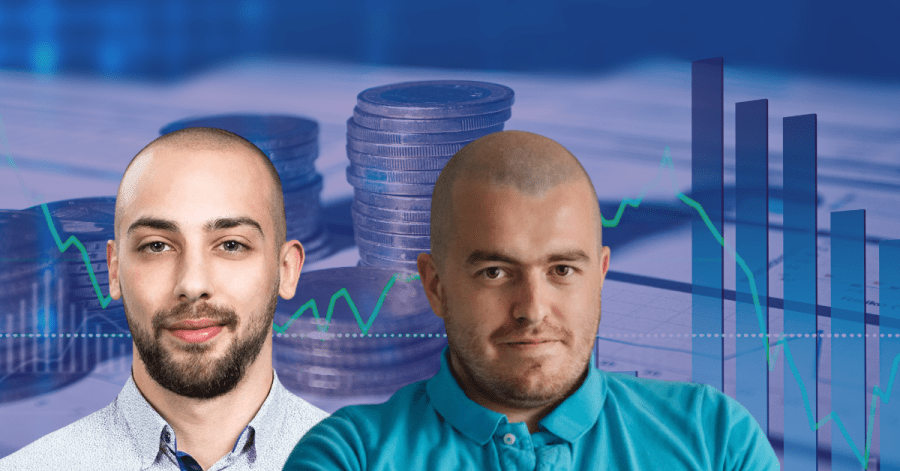Rumors and whispers about a sharp economic downturn started back in 2021 as the global economy began experiencing shortages post-Covid. With the Russian invasion of Ukraine, however, the narrative about stagflation hit too close to home.
The latest monetary measures of the US Federal Reserve and other central banks to fight inflation added to the equation. We can talk on and on about the crash in stock and crypto prices, the spike in inflation rates, and the trillions of US dollars wiped out from the stock market this year. Here are just a few quick facts for context:
- The S&P 500 is down about 18% year-to-date.
- Inflation rates are at 40-year highs.
- More than $7 trillion has been wiped out from the stock market this year.
With no intention to sound too bitter, investors hint that the worst is not behind our backs still. The bear market is here and we are living in times of stagflation. However, this is not to make investors abandon their investment plans. Fear is the worst advisor.
That is why The Recursive reached out to better advisors – investment and crypto experts, for their insights on investing in a downturn. Bozhidar Balevski is a financial analyst and founder of INVESTCLUB, the educational platform for stocks and crypto investments. Vlad Mercori is CEO of StakeBorg, the Romanian startup that aims to create a powerful bridge between investors and blockchain-based projects.
The Recursive: Is this a typical bear market? Why (not)?
Bozhidar Balevski: From a historical point of view, if we look at the percentage base of how much the market has fallen from peak to trough, everything looks normal. One thing in the current bear market that is unprecedented is that this is the first time since the creation of crypto that we experience times of quantitative tightening. We have never been in such a situation in the crypto market. Ever since 2009 when Bitcoin was launched, we have lived in times when central banks have been constantly printing more money to artificially stimulate the economy with low-interest rates. In turn, this encourages people to invest and especially to invest in high-risk asset classes.
The reason why we experience quantitative tightening is that this is the first time in the last 40 years, we are witnessing seriously high global inflation (above 3 %). Historically, we have seen that the only way in which such inflation can be curbed is by increasing the interest rates by quantitative monetary tightening.
Vlad Mercori: This is the first time when the crypto industry collides with high inflation and a recession. So this is anything but a typical bear market.
What are investors to do in times of economic downturn?
Vlad Mercori: Patience is key. Macro leads the way so as long as that area is completely uncertain, there is zero visibility for risk-on assets. Unless the FED will pivot soon (I doubt) I am not doing much. It’s a waiting game for now.
Bozhidar Balevski: We are now entering the so-called stagflation times similar to what happened in the 1970s. Before that, the economists were led by the Phillips curve according to which the economy cannot be slowed down in times of high inflation. From 1971 – 1981 we saw something similar to what we are experiencing now – slow economic growth, high unemployment, with high inflation.
Just as Winston Churchill says “To see the future we have to look at the past”. In such stagflation times, the best performing asset classes have proven to be raw materials and especially petroleum. Another asset class that performed well during stagflation, and we are seeing that in the past two years, is real estate. Because of the high entry costs, real estate is an asset class that is preferred by wealthier individuals. There are, however, real estate investment trusts (REITs) that work as indexes for real estate and thus make investing in real estate available to more people. The difference between now and then is that real estate prices have gone way up in the past 10 years and may not be as great of an option as they proved to be 40 years ago. In stagflation times, the stocks and the bonds market are not performing well, and sometimes cash can perform better.
It is essential that during times of high inflation, investors are looking for asset classes with high real returns. Unlike nominal return, real return reflects the rates of inflation.
What asset classes would you recommend for investing in a downturn? Would you share some of the investments that make up your current portfolio?
Bozhidar Balevski: I diversify my portfolio according to the principles of Ray Dalio. Around 30% of my money is invested in stocks, another 30% is cash, 20% is in crypto, and the rest is invested in raw materials.
What is essential nwhen investing in a downturn is to stay resilient and endure the sharp market drops while keeping a positive net sum. I would advise traditional investors to bet on value stocks. In other words, these are the stocks that have low price-to-earning (P/E) ratios, low levels of debts, high efficiency, and a high level of competitiveness.
Investors are to look for a business competitive advantage that ensures no other company can surpass the one they invest in. For example, take Facebook, whatever happens in the next 5-6 years, no one can replace Facebook and its 3 billion people customer base. The same thing holds true for Google. Outside of the tech industry, such companies are the businesses in the chip industry. The high market entry fees and the current market shortages, make it impossible for new companies to establish themselves. That is why the current market leaders Micron and Intel would hardly be replaced anytime soon. Companies in the pharmaceutical sector have also proven to be resilient to market crises.
What investment strategies do you recommend crypto investors use in such a market situation?
Vlad Mercori: I am young and I have time to make mistakes so I can afford a risky approach. I am mostly cash right now waiting for the right opportunities in crypto. We have a 20-30% downside for Bitcoin from here but a 4-5x+ upside for the years to come. Asymmetric bets is the name of the game.
In such a weird environment anything is riskier than it was some years ago. We had a pandemic, the first of our generation, issues with supply chains, inflation, war in Europe and now a recession. There is no safe-haven in the middle of hell.
Bozhidar Balevski: Right now I believe it is best for investors to stick to crypto investments that bear the lowest risks, namely Bitcoin and Ethereum. Everything else in the crypto market bears higher risks. If investors don’t want to sell out, they can consider holding their investments in Bitcoin or Ethereum.
Many crypto investors enter the market with the mindset ‘What can I earn?’ instead of asking themselves first ‘What I can lose?’. This is a wrong mindset, especially in times of high uncertainty. Investors should always ask themselves first what they can lose and how much they can afford to lose. I believe that Bitcoin is the least risky crypt investment as it bears virtually no risk of losing money. Unless some regulatory changes happen.
Investing in altcoins (alternative digital currency to Bitcoin) is undesirable because it is highly risky. Such types of altcoins are very volatile and quickly change their market value. For example, if we look at the top 10 cryptocurrencies in the past 10 years we can see that the only constant winners are Bitcoin and Ethereum.
So despite the fact that many people might consider the fall in the crypto markets an enticing opportunity to enter the market, the rule of thumb is to keep in mind their ability to lose.
Do you then prefer investments in companies instead of indexes?
Bozhidar Balevski: This depends on the level of financial literacy of every investor. If the investor does not know how to perform company analysis and evaluations, it is better to invest in indexes.
For those who want to invest in indexes such as the S&P 500, which is thought to be one of the most secure investments, it is important to keep in mind that these are long-term investments that would bear profits in a 10-year horizon.
What about savings? What do you think are the best approaches to growing savings during a period of high inflation?
Vlad Mercori: It might be counterintuitive but I would invest in myself. There is no better bet. You beat inflation by becoming better, by having skills that allow you to ask more money for your services. Same if you have a business, make sure you can survive the storm and if yes, invest in your unique selling points; in things your competition cannot replicate.







